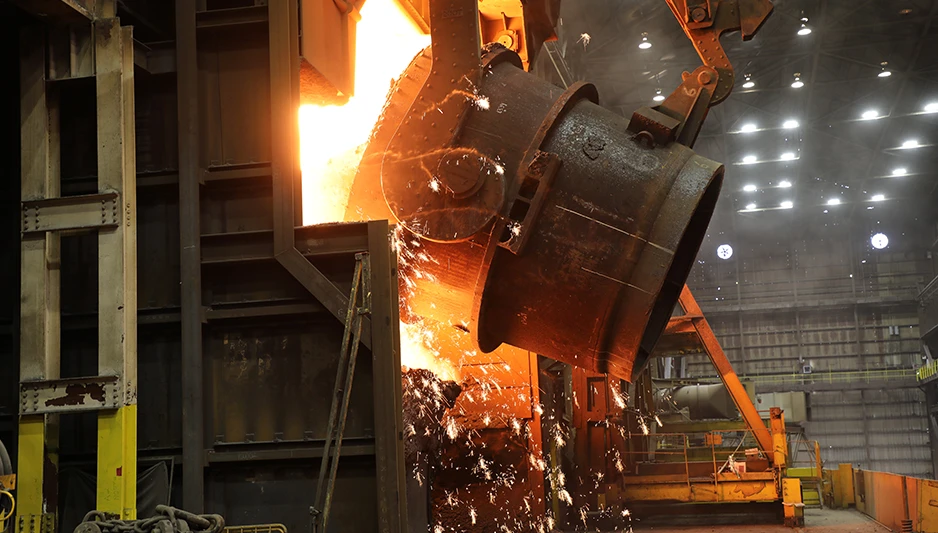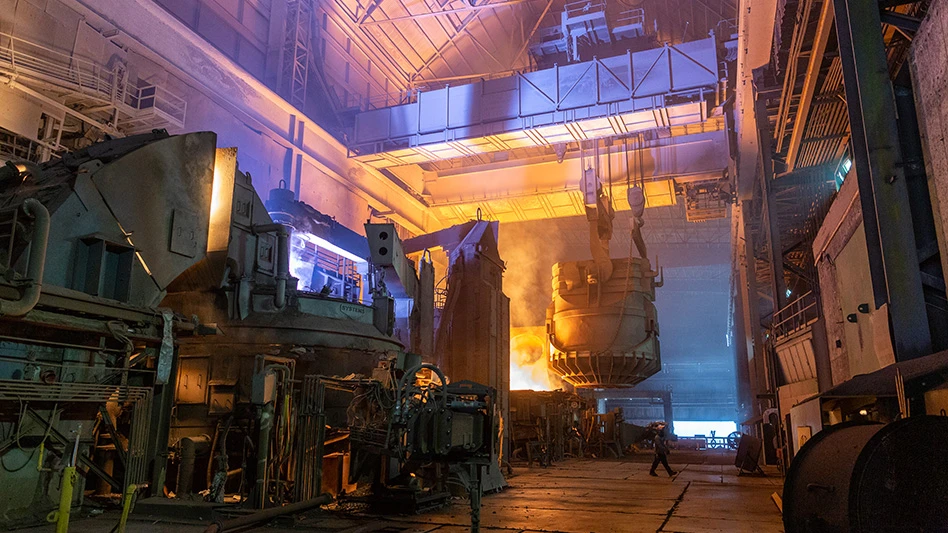
Thyssenkrupp AG and Tata Steel have signed a memorandum of understanding to form a joint venture to combine their European steel activities. Both companies will have an equal stake in the new company. The companies’ goal is to create a leading European flat steel player to be positioned as a quality and technology leader. The new entity is projected to have pro forma sales of about €15 billion ($18 billion), shipments of about 21 million tons annually and a workforce of about 48,000 across 34 locations, according to a news release issued by Thyssenkrupp.
The joint venture, Thyssenkrupp Tata Steel, will be managed through a holding company based in the Netherlands. It will have a two-tier management structure comprising a management board and a supervisory board, Thyssenkrupp says. Both boards are to have equal representation from Thyssenkrupp and Tata. The codetermination structures in Germany, the Netherlands and Great Britain will be retained.
Heinrich Hiesinger, CEO of Thyssenkrupp AG, headquartered in Essen, Germany, says, “Under the planned joint venture, we are giving the European steel activities of Thyssenkrupp and Tata a lasting future. We are tackling the structural challenges of the European steel industry and creating a strong No. 2.”
He adds, “In Tata, we have found a partner with a very good strategic and cultural fit. Not only do we share a clear performance orientation, but also the same understanding of entrepreneurial responsibility toward workforce and society.”
Natarajan Chandrasekaran, chairman of Tata Steel, headquartered in Mumbai, says, “The Tata Group and Thyssenkrupp have a strong heritage in the global steel industry and share similar culture and values. This partnership is a momentous occasion for both partners, who will focus on building a strong European steel enterprise. The strategic logic of the proposed joint venture in Europe is based on very strong fundamentals, and I am confident that Thyssenkrupp Tata Steel will have a great future.”
Thyssenkrupp will contribute its Steel Europe business to the planned joint venture. There also are plans for the joint venture to include Thyssenkrupp MillServices & Systems GmbH, a steel mill services provider that is part of the Materials Services business. Tata would add all of its flat steel activities in Europe.
Thyssenkrupp says due diligence will be conducted in the months ahead. In the process, the negotiating parties will give each other access to confidential business documents to the extent permissible between competitors. Based on this and on discussions with the supervisory board, the company says it expects to sign the contract with Tata in early 2018. The effective start of the joint venture could be in late 2018 following antitrust approval by the relevant authorities, according to Thyssenkrupp AG and Tata Steel.
Once the deal has closed, Thyssenkrupp says it and Tata plan to focus on establishing the joint venture and leveraging synergies from integrating sales, administration, research and development, joint optimization of procurement, logistics and service centers, as well as improved capacity utilization in downstream processing. After the ramp-up phase, the joint venture partners expect annual synergies of €400 million to €600 million ($480 million to $72 million).
Additionally, the production network will be reviewed starting in 2020 with the aim of integrating and optimizing the production strategy for the joint venture. “It is not yet possible to quantify the additional synergies from this integration in detail,” Thyssenkrupp says. “The scope for optimization also depends on numerous external factors, such as the outcome of the Brexit negotiations and the implications that follow. Other external parameters include the development of the regulatory environment in areas such as emission trading and international trade policy.”
Thyssenkrupp and Tata Steel say they expect that leveraging the cost synergies across the entire entity will require a reduction in workforce over the years ahead by up to 2,000 jobs in administration and potentially up to 2,000 jobs in production. This burden is expected to be shared roughly evenly between the two parties.
“We will not be putting any measures into effect in the joint venture that we would not have had to adopt on our own,” Hiesinger says. “On the contrary: By combining our steel activities, the burdens for each partner are lower than they would have been on a stand-alone basis.”
The steel industry has faced massive challenges in Europe for many years, Thyssenkrupp says, noting structural overcapacity in supply and constantly high import pressure, in particular. Various stages in the value chain are operating well below capacity. “Consequently, all producers are under pressure to fill capacity and forced to pass on restructuring gains to the market time and again,” the company says. “The result is a downward spiral and a need for restructuring about every three to four years, with major steel assets coming under threat of closure in the medium term.”
Thyssenkrupp says it is combining its European steel activities with Tata’s for five reasons:
- Economies of scale are a key success factor in a market caught up in ongoing consolidation. Combining the No. 2 and No. 3 steelmakers in Europe results in a powerful new No. 2 for quality flat steel with a competitive market position and promising growth prospects.
- The businesses are a complementary fit. Thyssenkrupp is stronger in the OEM (original equipment manufacturer) sector, while Tata’s strength lies with industrial customers. The main operating locations in Duisburg, IJmuiden and Port Talbot have good logistics links and serve customers in different, economically powerful regions. That makes for significantly broader overall coverage of customer sectors throughout Europe.
- The steelworks of Thyssenkrupp and Tata rank among the most efficient facilities in Europe. Thanks to effective cost management, both producers operate at a profit.
- Both partners aspire to quality and technology leadership in the European steel industry and continually develop innovative products and solutions for customers. High-tech steels are frequently the basis of industrial value chains in Europe and a key competitive differentiator.
- The two partners each have a highly capable and dedicated workforce. The companies also embrace change to secure their future. And both companies have the backing of strong shareholders through a trust structure that perpetuates the ideas and values of the original owners.
The planned joint venture marks another key milestone for Thyssenkrupp. In its evolution into a strong industrial group, the company says it has two priorities: reducing dependency on the highly volatile steel business and enabling optimum development of all business areas.
Hiesinger adds, “We have always targeted the best solution for Thyssenkrupp. A joint venture with Tata is the only option that addresses the structural overcapacities in the European steel market, that creates substantial added value through synergies and at the same time is in line with our corporate culture. This also marks a clear commitment to our roots, as the joint venture enables Thyssenkrupp to retain its involvement in steel.”
More information on the joint venture can be found at www.thyssenkrupp.com/en/way-forward-for-steel/?utm_source=google&utm_medium=cpc&utm_campaign=zukunftfuerstahl.
Latest from Recycling Today
- In memoriam: Benny McGill
- Autocar releases Smart Battery Cable to advance refuse truck fire safety
- PLASTICS launches Positives of Plastics website
- Impact Air Systems launches compact ZAC400
- PCA to shut down paper machines at Washington containerboard mill
- BMRA provides landfill guidance for UK shredder operators
- Fornnax high-capacity tire recycling plant
- EU introduces measures to secure raw materials, strengthen economic security





